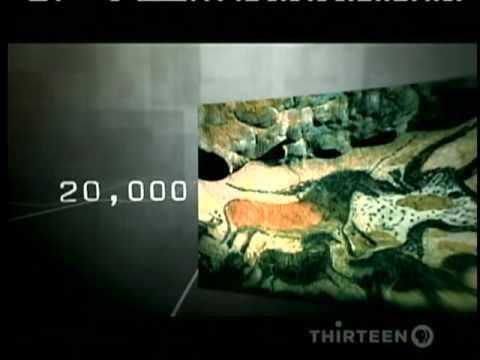O que se sabe sobre a convivência do Homo sapiens com outras espécies de humanos
Summary
TLDRThis video explores the fascinating history of human evolution, highlighting recent discoveries that challenge our understanding of our past. Penny Spikins, an archaeologist, discusses key findings about the Homo Sapiens' coexistence with other human species, such as Neanderthals, Denisovans, and Homo Naledi. The video delves into the complexities of early human emotions, cooperation, and survival strategies, suggesting that compassion and solidarity may have been crucial to our success. It also touches on the impact of environmental changes and the ongoing ecological challenges humanity faces, urging reflection on our past to inform a better future.
Takeaways
- 😀 Human origins research has led to significant discoveries, showing that Homo sapiens coexisted with other human species before their extinction.
- 😀 Penny Spikins, an archaeology professor, argues that understanding our distant past is essential to understanding how we see ourselves and imagine the future.
- 😀 Homo sapiens are not the only human species to have existed—several other species, such as Neanderthals, also populated the Earth.
- 😀 New human species, like Homo Longi (the 'Dragon Man'), continue to be discovered, revealing the complexity of human evolution.
- 😀 The discovery of Homo Naledi in 2015 challenged the idea that ancient humans were primitive and showed that they were culturally complex and capable of mourning their dead.
- 😀 Modern scientific understanding has shifted from a linear evolution model, suggesting that Homo sapiens coexisted with up to eight other human species.
- 😀 Denisovans, discovered 15 years ago, lived in Siberia and East Asia. They also contributed to the genetic makeup of modern humans, particularly outside of Africa.
- 😀 There is evidence that interbreeding between Homo sapiens and other species like Neanderthals and Denisovans took place, influencing the genetic diversity of modern humans.
- 😀 The extinction of Neanderthals may have been caused by a combination of climate changes, competition with Homo sapiens, and population decline.
- 😀 The role of compassion and altruism in human evolution has become clearer, with evidence showing that care for others, including the elderly and sick, was vital for survival and cultural development.
Q & A
What key discoveries about human origins have been made in recent years?
-Recent discoveries have revealed that Homo sapiens coexisted with other human species for a long time before these other species became extinct. Some of these species, such as the Denisovans, Neanderthals, and Homo Naledi, were previously unknown or misunderstood.
Why does Penny Spikins believe understanding our distant past is important?
-Penny Spikins argues that understanding our past is crucial for comprehending how we see ourselves today and how we imagine the future. She also explores how our emotions evolved over hundreds of thousands of years and how Homo sapiens interacted with other human species.
How did Homo sapiens interact with other human species?
-Homo sapiens interacted with several other human species, such as Neanderthals and Denisovans, both genetically and culturally. Evidence suggests that these species may have interbred, with genetic traces of Neanderthals found in modern humans outside of Africa.
What is the significance of the Homo Naledi discovery?
-Homo Naledi, discovered in 2015, was a smaller, brain-sized human species that showed evidence of cultural complexity. It is believed they mourned their dead, challenging previous ideas that early humans were solely primitive and brutish.
How did the concept of human evolution change over time?
-For a long time, scientists believed in a clear, linear progression of human evolution, where one species evolved into a more advanced form, replacing the earlier species. However, recent discoveries show that Homo sapiens may have lived alongside up to eight different human species at the same time.
What role did Denisovans play in human evolution?
-Denisovans, discovered only 15 years ago, were a species that lived in Siberia and East Asia. Evidence suggests they interbred with Neanderthals and Homo sapiens, and modern humans outside of Africa carry traces of Denisovan DNA.
What is the role of environmental changes in human evolution?
-Environmental changes, such as climate shifts and resource scarcity, played a major role in the extinction of species like Neanderthals. These changes, combined with competition and interbreeding with Homo sapiens, contributed to their eventual disappearance.
How did cultural and emotional development influence human survival?
-Human survival was not only influenced by physical traits but also by cultural and emotional traits. For instance, altruism and compassion, such as caring for the elderly or injured, were essential for community survival and knowledge transfer.
What is the significance of epigenetics in human evolution?
-Epigenetics refers to the activation of genes in specific environments, meaning that certain traits, such as susceptibility to mental health issues like depression or schizophrenia, may be inherited but only manifest under certain conditions.
How is the current extinction event different from past mass extinctions?
-Unlike past mass extinctions caused by environmental changes or asteroid impacts, the current extinction event is primarily caused by human activity, particularly climate change and the associated global warming, leading to irreversible ecological changes.
Outlines

This section is available to paid users only. Please upgrade to access this part.
Upgrade NowMindmap

This section is available to paid users only. Please upgrade to access this part.
Upgrade NowKeywords

This section is available to paid users only. Please upgrade to access this part.
Upgrade NowHighlights

This section is available to paid users only. Please upgrade to access this part.
Upgrade NowTranscripts

This section is available to paid users only. Please upgrade to access this part.
Upgrade NowBrowse More Related Video

Top 20 Greatest Archeological Discoveries Ever

Great Transitions: The Origin of Humans — HHMI BioInteractive Video

1of6 Evolution-Becoming Human-Part3-The Last Human Standing

HISTÓRIA DA NEUROCIÊNCIA - #Neurofuncional

Scientist Shocked! QURANIC WONDER | Small Brain Found In The Human Heart | ISLAMIC WARNINGS

Mind-blowing Discoveries About Viruses and Their Relationship With Us
5.0 / 5 (0 votes)